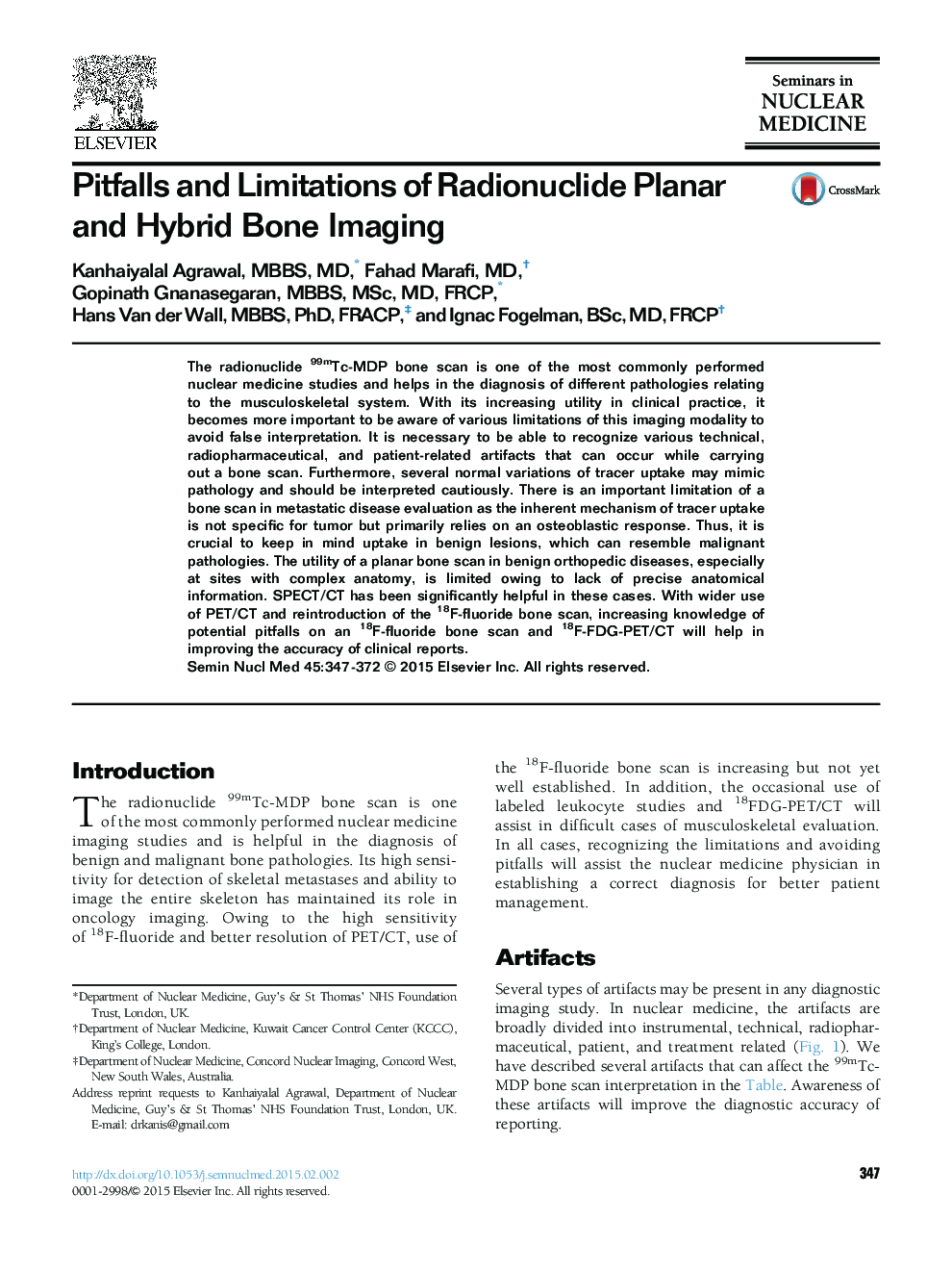| Article ID | Journal | Published Year | Pages | File Type |
|---|---|---|---|---|
| 4250850 | Seminars in Nuclear Medicine | 2015 | 26 Pages |
The radionuclide 99mTc-MDP bone scan is one of the most commonly performed nuclear medicine studies and helps in the diagnosis of different pathologies relating to the musculoskeletal system. With its increasing utility in clinical practice, it becomes more important to be aware of various limitations of this imaging modality to avoid false interpretation. It is necessary to be able to recognize various technical, radiopharmaceutical, and patient-related artifacts that can occur while carrying out a bone scan. Furthermore, several normal variations of tracer uptake may mimic pathology and should be interpreted cautiously. There is an important limitation of a bone scan in metastatic disease evaluation as the inherent mechanism of tracer uptake is not specific for tumor but primarily relies on an osteoblastic response. Thus, it is crucial to keep in mind uptake in benign lesions, which can resemble malignant pathologies. The utility of a planar bone scan in benign orthopedic diseases, especially at sites with complex anatomy, is limited owing to lack of precise anatomical information. SPECT/CT has been significantly helpful in these cases. With wider use of PET/CT and reintroduction of the 18F-fluoride bone scan, increasing knowledge of potential pitfalls on an 18F-fluoride bone scan and 18F-FDG-PET/CT will help in improving the accuracy of clinical reports.
